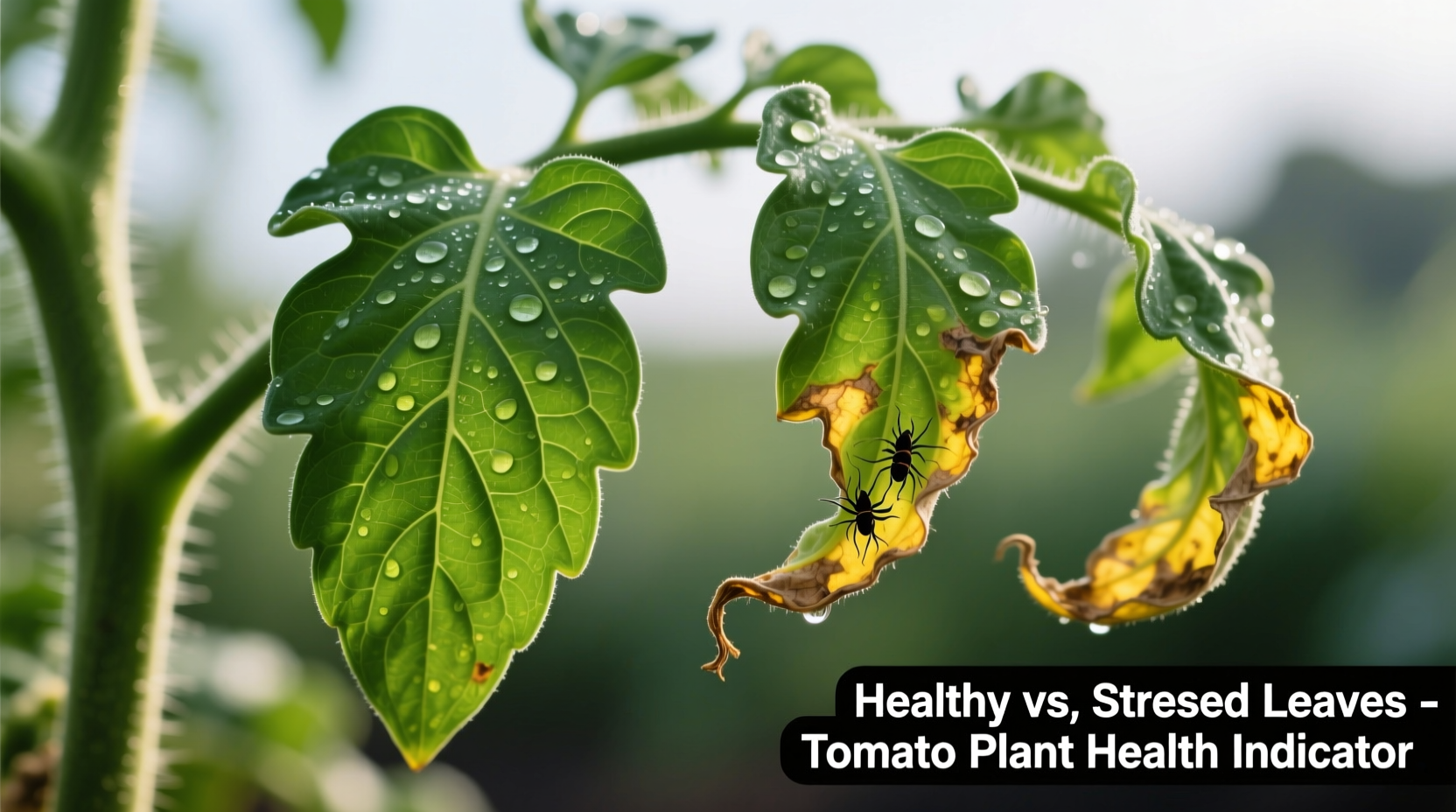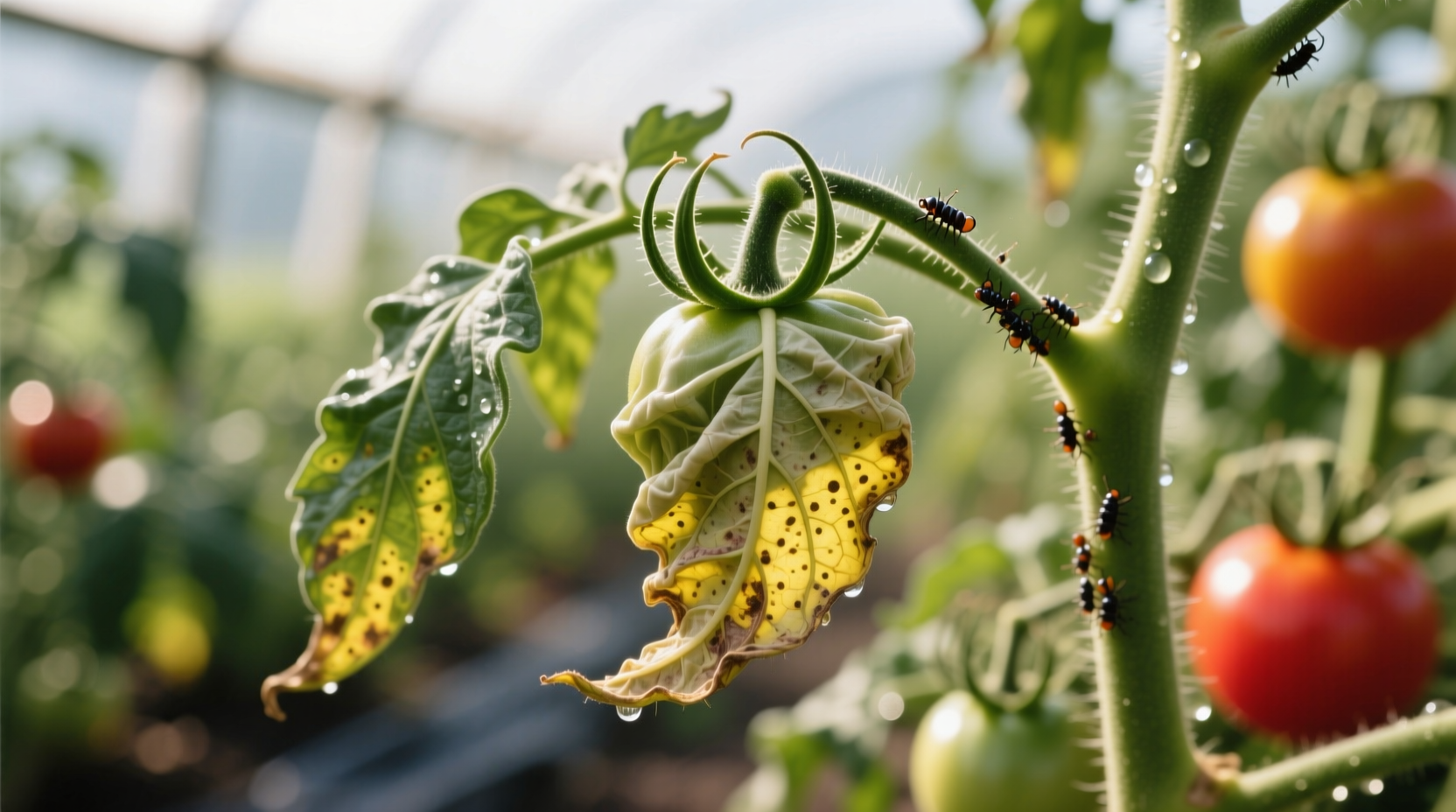If your tomato plants' leaves are curling upward or inward, the most common causes are environmental stress (particularly heat and water issues), physiological leaf roll, or pest infestations like whiteflies. In most cases, curled tomato leaves aren't fatal to your plants and can be corrected with proper watering, shade management, or pest control within 48-72 hours.
Why Are My Tomato Leaves Curling? The First 24 Hours Matter
When you notice tomato leaves curling, your immediate action determines whether your plants recover quickly or face serious damage. This guide provides a step-by-step diagnostic approach used by professional horticulturists to identify and resolve leaf curl issues before they compromise your harvest.
Step 1: Initial Assessment (First 5 Minutes)
Before jumping to conclusions, conduct this quick visual inspection:
- Check which leaves are affected - Are lower leaves curling first? This often indicates water stress. Are new growth leaves curling? This suggests viral infection or herbicide damage.
- Examine the curl direction - Upward curling typically points to heat/water stress. Downward curling often indicates viral infection.
- Feel the leaves - Are they dry and brittle (underwatering) or thick and leathery (physiological leaf roll)?
- Inspect the undersides - Look for whiteflies, aphids, or stippling that indicates pest activity.
| Curl Type | Appearance | Urgency Level |
|---|---|---|
| Physiological Leaf Roll | Lower leaves roll upward, thickened texture, no discoloration | Low - Usually harmless |
| Heat/Water Stress | Leaves curl inward, dry to touch, may show yellow edges | Medium - Requires immediate attention |
| Viral Infection | Upward curl with yellow mosaic patterns, stunted growth | High - Isolate affected plants immediately |
| Pest Damage | Curling with visible insects or sticky residue | Medium-High - Treat within 24 hours |
Step 2: Identifying the 7 Most Common Causes
1. Environmental Stress (Most Common)
When temperatures exceed 90°F (32°C) for multiple days, tomato plants naturally curl leaves to reduce surface area and conserve moisture. This physiological leaf roll affects 60-70% of home garden tomato plants during heat waves according to University of California Agriculture and Natural Resources.
Solution: Provide afternoon shade using 30-50% shade cloth, maintain consistent soil moisture (1-2 inches of water weekly), and apply 3-inch mulch layer. Avoid overhead watering during peak heat.
2. Water Management Issues
Both underwatering and overwatering cause leaf curl. Underwatering makes leaves curl inward to reduce transpiration. Overwatering causes oxygen deprivation, leading to upward curling of lower leaves.
Solution: Check soil moisture 2 inches below surface before watering. Use drip irrigation to maintain consistent moisture. For container plants, ensure proper drainage holes.
3. Whitefly Infestation
Whiteflies transmit Tomato Yellow Leaf Curl Virus (TYLCV), causing severe upward curling, yellowing, and stunted growth. A single infected whitefly can transmit the virus in just 15-30 minutes of feeding.
Solution: Immediately isolate affected plants. Use yellow sticky traps and insecticidal soap sprays every 5-7 days. Remove severely infected plants to prevent spread.
4. Herbicide Drift
Even minute amounts of herbicides like 2,4-D can cause dramatic leaf curling and distortion. This often occurs when mowing grass with weed killer on windy days near vegetable gardens.
Solution: Flush soil thoroughly with water. New growth should appear normal within 2-3 weeks if damage isn't severe. Prevent future exposure by avoiding herbicide use near gardens.
5. Nutrient Imbalance
Phosphorus deficiency causes upward curling of older leaves, while calcium deficiency leads to downward curling of new growth. Excess nitrogen can also trigger leaf curl.
Solution: Conduct soil test before amending. For immediate relief, apply balanced organic fertilizer at half-strength. Avoid high-nitrogen fertilizers during fruiting stage.
6. Viral Infections
Besides TYLCV, other viruses like Tomato Mosaic Virus cause leaf distortion. Viral infections typically show mosaic patterns along with curling.
Solution: Remove and destroy infected plants immediately. Disinfect tools with 10% bleach solution. Plant resistant varieties (look for TYLCV-resistant codes like "TYLCV-R" on seed packets).
7. Natural Physiological Response
Some tomato varieties naturally exhibit leaf roll as a protective mechanism. This harmless condition affects lower leaves first and shows no yellowing or stunting.
Solution: No action needed. This physiological leaf roll actually helps plants conserve water during heat waves.
Step 3: Your 48-Hour Action Plan
Follow this timeline for maximum recovery:
- Hour 0-6: Complete initial assessment and isolate potentially infected plants
- Hour 6-12: Adjust watering schedule and provide temporary shade if heat is factor
- Hour 12-24: Apply appropriate treatment (insecticidal soap, nutrient correction)
- Hour 24-48: Monitor for improvement; if no change, consider more aggressive measures
- Hour 48-72: Evaluate recovery progress and adjust treatment as needed

When to Worry: Critical Warning Signs
While most leaf curl cases are treatable, watch for these red flags that indicate serious problems:
- Complete leaf yellowing within 48 hours of curling
- Stunted growth combined with leaf curl
- Whitefly colonies visible on leaf undersides
- Progressive curling moving from lower to upper leaves
- Failure to improve after 72 hours of proper treatment
According to Cornell University's Plant Disease Diagnostic Clinic, early intervention within the first 72 hours improves recovery rates by 85% compared to delayed treatment.
Preventing Future Leaf Curl Problems
Implement these proven strategies to protect your tomato plants:
- Choose resistant varieties (look for codes like "VFN" or "TYLCV-R" on seed packets)
- Maintain consistent soil moisture with drip irrigation
- Apply 3-inch organic mulch layer to regulate soil temperature
- Rotate crops annually to prevent soil-borne diseases
- Use row covers early in season to prevent whitefly transmission
- Test soil every 2 years to maintain proper nutrient balance
Common Questions About Curled Tomato Leaves
Can curled tomato leaves return to normal?
Yes, in most cases caused by environmental stress or temporary water issues, tomato leaves will gradually return to normal within 3-7 days after correcting the underlying problem. However, leaves severely damaged by viruses or herbicides typically won't recover, though new growth should appear normal if the issue is addressed promptly.
Should I remove curled leaves from tomato plants?
Generally no, unless the leaves show clear signs of disease. Removing too many leaves reduces the plant's photosynthetic capacity and can stress it further. For physiological leaf roll or temporary stress, leaves often recover naturally. Only remove leaves that are completely yellowed, spotted, or showing viral symptoms to prevent disease spread.
How much water do tomatoes need to prevent leaf curl?
Mature tomato plants require 1-2 inches of water per week, applied deeply 2-3 times weekly rather than daily shallow watering. Container plants may need daily watering during hot weather. The key is maintaining consistent soil moisture - let the top 1-2 inches of soil dry slightly between waterings, but never allow complete drying. Use the finger test: soil should feel like a damp sponge at 2-inch depth.
Can I still eat tomatoes from plants with curled leaves?
Yes, in most cases. Environmental stress and physiological leaf roll don't affect fruit safety. However, if leaf curl results from herbicide exposure or severe viral infection, it's safest to discard the fruit. When in doubt, wash produce thoroughly and avoid consuming fruit from plants showing other signs of distress like discoloration or unusual growth patterns.
What's the difference between normal leaf roll and problematic curling?
Normal physiological leaf roll affects only older, lower leaves which curl upward uniformly with no discoloration. Problematic curling often shows additional symptoms: yellowing, mosaic patterns, downward curling, or affects new growth first. Normal leaf roll typically occurs during heat waves and resolves when temperatures cool, while disease-related curling worsens progressively regardless of weather conditions.











 浙公网安备
33010002000092号
浙公网安备
33010002000092号 浙B2-20120091-4
浙B2-20120091-4